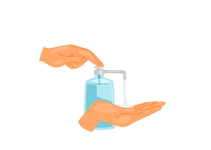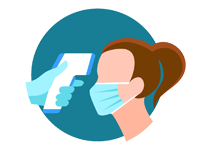Sodium Thiosulphate
Introduction
Sodium Thiosulphate is a medically significant compound used for treating various conditions, especially those involving toxic substances in the body. It acts as a powerful antidote in cases of cyanide poisoning and is also used in the management of certain types of calcification in tissues. This compound can be administered intravenously and is often a part of emergency and supportive care protocols. Due to its detoxifying and antioxidant properties, it has also found application in off-label uses such as reducing side effects from chemotherapy and treating specific skin conditions.
Medicine Not Available for Sodium Thiosulphate
Uses of Sodium Thiosulphate
- Treatment of cyanide poisoning
- Management of calciphylaxis in dialysis patients
- Prevention of cisplatin-induced hearing loss (off-label)
- Treatment of certain dermatological conditions like acne or fungal infections (topical use)
How Sodium Thiosulphate works
Sodium Thiosulphate works by neutralizing toxic substances in the body. In cyanide poisoning, it provides sulfur to support the conversion of cyanide into thiocyanate, which is then safely excreted from the body. It also acts as a chelating agent and antioxidant, which helps reduce tissue damage and calcification in blood vessels.
Benefits of Sodium Thiosulphate
- Effective and rapid treatment for cyanide poisoning
- Reduces soft tissue calcification in patients with kidney failure
- May help prevent chemotherapy-related hearing loss
- Can be used topically for fungal infections and acne
How to take Sodium Thiosulphate
Sodium Thiosulphate is usually administered under medical supervision. For cyanide poisoning, it is given via slow intravenous injection. In calciphylaxis treatment, it is often administered through IV over multiple sessions. Dosage varies based on the patient’s condition, weight, and medical history. Topical forms should be applied as directed by a healthcare provider.
Type of Dosage Available
- Injection (IV solution)
- Topical solution (for skin use)
Side effects of Sodium Thiosulphate
- Nausea or vomiting
- Headache
- Metallic taste in the mouth
- Hypotension (low blood pressure)
- Allergic reactions (rash, itching, swelling)
Safety advice
- Should be administered under medical supervision only
- Not recommended during pregnancy unless absolutely necessary
- Inform your doctor about kidney or liver problems before use
- Use caution if allergic to sulfur-containing drugs
- Monitor blood pressure and electrolyte levels regularly during treatment
Frequently Asked Questions (FAQs)
Q: What is Sodium Thiosulphate used for?
A: Sodium Thiosulphate is mainly used to treat cyanide poisoning and calciphylaxis in dialysis patients. It is also used off-label for other medical conditions.
Q: Is Sodium Thiosulphate safe during pregnancy?
A: It should only be used during pregnancy if clearly needed and prescribed by a doctor. Discuss the risks and benefits with your healthcare provider.
Q: Can I take Sodium Thiosulphate at home?
A: No, this medication should be administered in a clinical setting under medical supervision, especially for intravenous forms.
Q: Are there any food or drug interactions?
A: Always inform your doctor about all medicines, supplements, or herbal products you are taking to avoid potential interactions.
Q: Can it be used for skin conditions?
A: Yes, the topical form of Sodium Thiosulphate is sometimes used to treat certain fungal infections or acne, under a doctor’s direction.
Download India's most affordable pharmacy app
- Compare with medicine prices
- Save upto 90% on your medicine bills

Temperature Controlled storage and delivery

Regular Sanitization

Disinfected Packaging

















 Added!
Added!